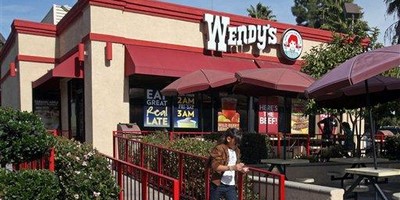WASHINGTON -- Just before first light April 30, 35 years ago this week, a U.S. Marine CH-46 helicopter from HMM-165, call sign "Lady Ace 09," landed on the roof of the American Embassy in Saigon, South Vietnam, to pick up Ambassador Graham Martin. Moments later, a message -- classified "secret" by the National Security Agency -- was flashed to the Oval Office informing the president, "Lady Ace 09 has the ambassador and his immediate staff on board."
Over the next several hours, dozens more messages were transmitted to the commander in chief, detailing virtually in real time herculean efforts to evacuate the remaining Americans from the city as North Vietnamese army, or NVA, regulars closed in on our last diplomatic, military and intelligence missions in the Republic of Vietnam. The now-declassified Operation Frequent Wind intercepts in the Gerald R. Ford Presidential Library read like a novel.
Nineteen minutes after the first transmission: "Lady Ace 09 reports feet wet. ... Lady Ace 13 reports outbound with 16 USA. ... Lady Ace 10 going in for landing." Two of the cables describe CS tear gas that nearly blinded the pilots. A half-hour into the evacuation: "Lady Ace 14 is on the roof. He reports small-arms fire on the northeast corner of the building in a small clump of trees at ground level. Lady Ace is loading at this time." Then, three minutes later: "Spectre reports numerous firefights all around the building. Swift 33 inbound feet dry. Lady Ace 14 reports off with 21 pax." The abbreviation "pax" is military-speak for passengers.
At 7:53 a.m., the final helicopter off the embassy roof -- a Marine CH-46 from HMM-164, call sign "Swift 22" -- brought out Maj. James Kean, the Marine Security Guard commander, and the last 10 of his Marines. Less than four hours later, NVA armor and infantry captured the presidential palace in Saigon.
Recommended

This week, Lady Ace 09, freshly painted in Vietnam-era markings, was commemorated at the Flying Leatherneck Aviation Museum, at Marine Corps Air Station Miramar, in California. Among the pilots and aircrew who gathered for the celebration were those like retired Col. Gerald Berry, who saved the U.S. ambassador and helped rescue more than 7,100 Americans and our allies during the frantic hours of Operation Frequent Wind. There were even more attendees who were veterans of the current war in both Iraq and Afghanistan. But no matter where or when they fought, nearly all had a common refrain: "This war shouldn't end like Vietnam." It doesn't have to.
There are pundits in the so-called mainstream media waxing eloquent about parallels between Vietnam and Afghanistan, but those making the comparisons ignore some very inconvenient facts. Most importantly, the adversaries confronted in both wars are radically dissimilar.
In Vietnam, U.S. troops and our allies faced nearly a quarter-million conscripted but well-trained, -disciplined and -equipped NVA regulars and upward of 100,000 highly organized Viet Cong insurgents from 1966 onward. Each year of the war, the NVA launched multiple major campaigns against U.S. and Republic of Vietnam forces in accord with orders issued by authorities in Hanoi. When the Viet Cong collapsed in the aftermath of the 1968 Tet offensive, the NVA -- supported by the Soviet Union, Communist China and the Warsaw Pact -- simply increased its numbers.
The Republic of Vietnam didn't succumb to an insurgency 35 years ago this week. It was invaded by the army of a hostile neighbor. None of that is happening in the shadows of the Hindu Kush -- yet.
The 10,000 to 25,000 Taliban currently operating in Afghanistan have cross-border "safe havens" in Pakistan and receive some military training, equipment and logistics support from Pakistan and Iran. Taliban leaders once counted on financing from radical Wahhabi Islamists and received support and direction from elements of the Pakistani intelligence service. Today the Taliban are a narco-insurgency, funded almost exclusively by opium. Their "warriors" and zealous "martyrs" claim Muslim purity, but their "military campaigns" are limited to planting improvised explosive devices, suicide bombings and murders. They aren't about to overwhelm Kabul -- or even a provincial capital.
That, of course, doesn't mean this war can't be lost, for there is one very important similarity between Vietnam and Afghanistan -- a parallel promise of withdrawing American troops and assistance. In 1973, President Richard Nixon withdrew all American troops except for a handful of advisers from the Republic of Vietnam. The following December, Congress cut off all military aid to Vietnam. Four months later, U.S. Marines were making desperate sorties to the roof of our embassy in Saigon.
On this 35th anniversary of that event, President Barack Obama and his advisers would be wise to remember where the Vietnam War was really lost. It wasn't in the paddies or triple-canopy mountains of Southeast Asia. Vietnam was lost in the corridors of power in our own nation's capital. That never should happen again.























Join the conversation as a VIP Member